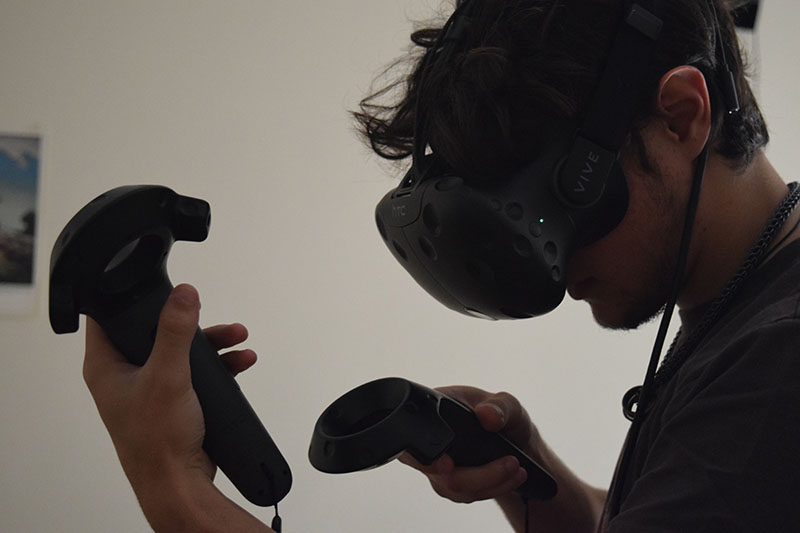The world is your canvas.
Clutching one remote in each hand and looking through the lenses of a black plastic mask, you are transported into a different realm. Your arm waves across your body, and a bright streak of color follows, hovering in the air.
While one might think that this machine would only exist in a futuristic society, this experience is available in Palo Alto High School’s very own Art Department, which houses a new virtual reality paint machine in the side room attached to Room 101. The machine can be accessed by art students to not only create prototypes of sculptures, but also to create digital art itself.
The machine consists of Tilt Brush software, Vive goggles and a gaming computer. This is a step towards unifying technology and art, and previews how new technological advances will affect the future of creative expression within the Palo Alto community.
Paly art teacher Susan LaFetra wrote a grant to Partners in Education for $3,000 and received the funds this past summer.
“This reaches kids who aren’t typical art students, who have trouble sitting still at a table,” LaFetra says. “It allows them to express their creativity too.”
Although this VR machine theoretically can be used by all, only students enrolled in Art Spectrum and Ceramics and Sculpture can access the equipment. One student in particular, senior Jeremiah Cohn, has fallen in love with this medium.
“There are no distractions. It’s all your canvas. There’s nothing for you to worry about there. There are no shadows being cast. You don’t have to worry about lighting. You don’t have to worry about an audience.”
— Jeremiah Cohn, senior
With his new passion for the virtual reality paint machine, Cohn plans on teaching the skills he has discovered to the ceramics class through individual lessons.
LaFetra envisions the machine being a transformative tool for other departments, with its innovative approach being a valuable way to help students.
“Imagine if you’re in a biology class and the teacher asks you to diagram a human cell, and you could do that in three dimensions,” LaFetra says. “Imagine creating a solar system with this. In English, you could take things out of literature and illustrate them.” v



